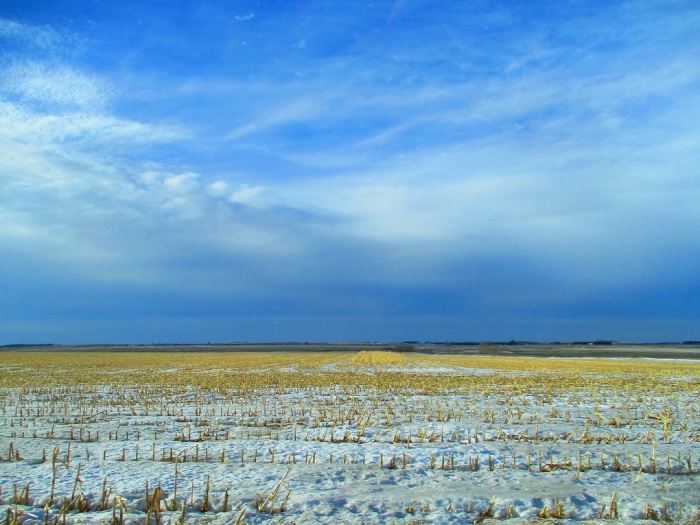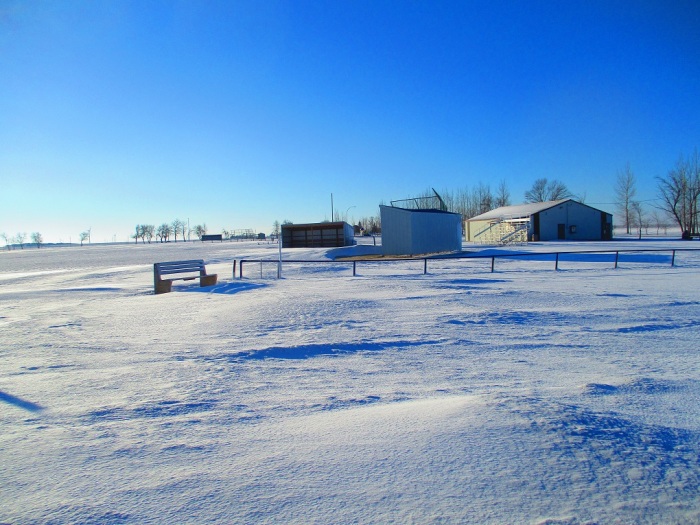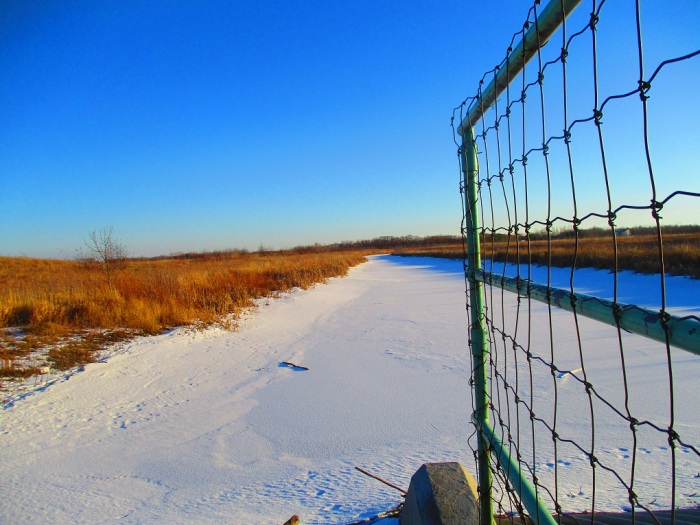I took a trip to South Central Manitoba. Clear skies and the rolling Prairies. More specifically Somerset, Manitoba, where I grew up. Mean Old Man Winter will be arriving soon in these northern climes.











I took a trip to South Central Manitoba. Clear skies and the rolling Prairies. More specifically Somerset, Manitoba, where I grew up. Mean Old Man Winter will be arriving soon in these northern climes.











Mobula is a genus of ray in the family Myliobatidae (eagle rays). Their appearance is similar to that of manta rays, which are in the same family. Species of this genera are often collectively referred to as “flying mobula” or simply “flying rays”, due to their propensity for breaching, sometimes in a spectacular manner. The devil fish can attain a disc width of up to 5.2 m (17 ft) and can probably weigh over a ton, second only to the Manta species in size. Despite their size, little is known about this genus, much of it being from anecdotal accounts.
Tall, small, big, short, it makes no difference. Unless of course you are a middle linebacker or a jockey. Despite the trivial nature of this post, there are some surprising revelations here. Never realized Snooky was 4’8″, and Seth Green was 5’4″.
There is a bit of redundancy here, it was necessary to include as many people as possible.
World leaders
Canada’s current Prime Minister Justin Trudeau is 6’2″.
| Name | Height, Cm | Height, Feet and inches (rounded to nearest) | Country (leader of ) |
|---|---|---|---|
| Abdelaziz Bouteflika | 159 | 5’2 | Algeria |
| Cristina Fernandez de Kirchner | 164 | 5’4 | Argentina |
| Julia Eileen Gillard | 166 | 5’5 | Australia |
| Stephen Harper | 188 | 6’2 | Canada |
| Fidel Castro | 190 | 6’3 | Cuba |
| Tarja Halonen | 172 | 5’8 | Finland |
| François Hollande | 170 | 5’7 | France |
| Nicolas Sarkozy | 165 | 5’5 | France |
| Napoleon | 168 | 5’6 | France |
| Jacques Chirac | 189 | 6’2 | France |
| François Mitterrand | 172 | 5’7 | France |
| Valéry Giscard d’Estaing | 189 | 6’2 | France |
| Georges Pompidou | 181 | 5’11 | France |
| Charles de Gaulle | 196 | 6’5 | France |
| Angela Merkel | 165 | 5’5 | Germany |
| Gerhard Schröder | 174 | 5’8 | Germany |
| Helmut Kohl | 193 | 6’4 | Germany |
| Adolf Hitler | 173 | 5’8 | Germany |
| Viktor Orban | 174 | 5’8 | Hungary |
| Mahmoud Ahmadinejad | 157 | 5’2 | Iran |
| Saddam Hussein | 188 | 6’2 | Iraq |
| David Ben Gurion | 152 | 5’0 | Israel |
| Silvio Berlusconi | 165 | 5’5 | Italy |
| Benito Mussolini | 169 | 5’6 | Italy |
| Yasuo Fukuda | 169 | 5’6 | Japan |
| Kim Yong Ill | 160 | 5’3 | Korea (North) |
| Muammar Gaddafi | 183 | 6’0 | Libya |
| Benito Juarez | 137 | 4’6 | Mexico |
| Josef Stalin | 165 | 5’5 | Russia |
| Dmitry Medvedev | 163 | 5’4 | Russia |
| Vladimir Putin | 170 | 5’7 | Russia |
| Boris Yeltsin | 187 | 6’1 | Russia |
| Vladimir Lenin | 165 | 5’5 | Russia |
| Tony Blair | 183 | 6’0 | UK |
| David Cameron | 185 | 6’1 | UK |
| Winston Churchill | 168 | 5’6 | UK |
| Gordon Brown | 180 | 5’11 | UK |
| Margaret Thatcher | 165 | 5’5 | UK |
| Robert Gascoyne-Cecil | 193 | 6’4 | UK |
| Sir Alec Douglas-Home | 185 | 6’1 | UK |
| James Callaghan | 185 | 6’1 | UK |
| Edward Heath | 183 | 6’0 | UK |
| John Major | 180 | 5’11 | UK |
| Queen Elizabeth II | 163 | 5’4 | UK |
| Harold Wilson | 173 | 5’8 | UK |
| George W. Bush | 182 | 5’11 | USA |
| Barack Obama | 185 | 6’1 | USA |
| John F Kennedy | 183 | 6’0 | USA |
| George Washington | 187 | 6’2 | USA |
| Abraham Lincoln | 193 | 6’4 | USA |
| Ronald Reagan | 185 | 6’1 | USA |
| Bill Clinton | 184 | 6’2 | USA |
| George H.W Bush | 188 | 6’2 | USA |
| Gerald Ford | 183 | 6’0 | USA |
| Richard Nixon | 182 | 5’11 | USA |
| Hugo Chávez | 173 | 5’8 | Venezuela |
Go to Heaven for the climate, Hell for the company.
Mark Twain
Happiness is having a large, loving, caring, close-knit family in another city.
♥
Why do they call it rush hour when nothing moves?
♠
There are lots of people who mistake their imagination for their memory.
The only true wisdom is in knowing you know nothing.
♥
Just cause you got the monkey off your back doesn’t mean the circus has left town.
Sergey Mikhaylovich Prokudin-Gorsky was a Russian chemist and photographer, best known for his pioneering work in color photography during the early 20th century. His priceless color photographs documenting the waning days of the Russian Empire before the First World War and the Russian Revolution are today some of the most prized possession of the United States Library of Congress.
In the beginning of the 20th century, color photography was still in its infancy. It was the German photochemist Adolf Miethe, with whom Prokudin-Gorsky studied briefly the techniques, who greatly improved the three-color principle of color photography. Using a specialized camera developed by Adolf Miethe, Prokudin-Gorsky took three black and white images in quick succession, using red, green and blue filters, which were later recombined and projected with filtered lanterns to show near true color images. Because exposure time was often high and the three color-filtered photographs were not taken at the same time, subjects that did not hold steady during the entire operation exhibited colored fringes around its edges in the resulting color image. Such fringes are characteristics of many Prokudin-Gorsky’s photographs.
The Emir of Bukhara, Alim Khan (1880-1944), poses for his portrait, taken in 1911 shortly after his accession. As ruler of an autonomous city-state in Islamic Central Asia, the Emir presided over the internal affairs of his emirate as absolute monarch, although since the mid-1800s Bukhara had been a vassal state of the Russian Empire. With the establishment of Soviet power in Bukhara in 1920, the Emir fled to Afghanistan where he died in 1944.
Around 1905, Prokudin-Gorsky envisioned and formulated a plan to use the emerging technological advances in color photography to document the Russian Empire systematically. Tsar Nicholas II granted him permits that allowed him to travel unmolested across restricted areas and instructed the empire’s bureaucracy to cooperate with the photographer. For six years from 1909 through 1915 Prokudin-Gorsky travelled across the length and breadth of the vast country in a specially equipped railroad-car darkroom capturing vivid portraits of a lost world. His subjects ranged from the medieval churches and monasteries, to the railroads and factories of an emerging industrial power, to the daily life and work of Russia’s diverse population. According to one estimate, Prokudin-Gorsky took over 10,000 photographs during these years.
After the Russian Revolution, Prokudin-Gorsky left Russia in 1918 and eventually settled in Paris. Prokudin-Gorsky couldn’t take all of his photographs with him when he left Russia. Some sources claim he only had about 3,500 negatives with him before leaving the country, of which nearly half were confiscated by Russian authorities for containing material they deemed strategically sensitive for war-time Russia. Some of Prokudin-Gorsky’s negatives were given away, and some he hid on his departure. The remaining negatives—about 1,900 of them—and about 700 more album prints were purchased by the United States Library of Congress in 1948, four years after the death of Prokudin-Gorsky.
An Armenian woman from Artvin in national costume.
A merchant at the Samarkand market displays colorful silk, cotton, and wool fabrics as well as a few traditional carpets. A framed page of the Koran hangs at the top of the stall
Dressed in traditional Central Asian attire, a vendor of locally grown melons poses at his stand in the marketplace of Samarkand in present-day Uzbekistan.
Prokudin-Gorskii and others ride the Murmansk Railroad in a handcar along the shores of Lake Onega near Petrozavodsk.
Young Russian peasant women offer berries to visitors to their izba, a traditional wooden house, in a rural area along the Sheksna River near the small town of Kirillov.
Wooden mills using wind-power to grind wheat and rye are photographed in the middle of summer on the vast Siberian plain in rural Ialutorovsk county in Western Siberia.
A young Kazakh family in colorful traditional dress moving across the Golodnaia (or “Hungry”) steppe in present-day Uzbekistan and Kazakhstan. Many Central Asiatic peoples, for example the Kirghiz, Kazakhs, and Uzbeks, lived nomadic lives on the steppes, valleys, and deserts, migrating seasonally from one place to another as opportunities for obtaining food, water, and shelter changed.
Wearing traditional dress and headgear, a Turkmen camel driver poses with his camel, laden with what is most likely grain or cotton. Camel caravans remained the most common means of transporting food, raw materials, and manufactured goods in Central Asia well into the railroad era.
Sergei Mikhailovich Prokudin-Gorskii poses near a mountain stream, thought to be the Karolitskhali River in the Caucasus Mountains near the seaport of Batumi on the eastern coast of the Black Sea.
This photo shows the interior of a tea packaging and weighing operation located at the Chakva tea farm and processing plant just north of Batumi, close to the Black Sea coast in what is now the Republic of Georgia. The Chakva farm and plant was one of the major suppliers of tea to all parts of the Russian Empire.
In this portrait, Prokudin-Gorksii captures the traditional dress, jewelry, and hairstyle of an Uzbek woman standing on a richly decorated carpet at the entrance to a yurt, a portable tent used for housing by the nomadic peoples of Central Asia.
Five inmates stare out from a zindan, a traditional Central Asian prison–in essence a pit in the earth with a low structure built on top. The guard, with Russian rifle and bayonet, is attired in Russian-style uniform and boots.
A small nineteenth-century wooden chapel, was on the north side of the White Lake in north central European Russia.
In the early years of the First World War, Prokudin-Gorskii photographed a group of prisoners of war from the Austro-Hungarian Empire. The men are probably Poles, Ukrainians, and members of other Slavic nationalities, imprisoned at an unidentified location in the far north of European Russia near the White Sea. This image escaped being confiscated by border guards probably because what is being represented is not immediately obvious.
A Bashkir switch operator poses by the mainline of the railroad, near the town of Ust’ Katav on the Yuryuzan River between Ufa and Cheliabinsk in the Ural Mountain region of European Russia.
The Ural Mountain region is noted for the richness of its iron deposits and ores. The Bakaly hills, in the area outside the city of Ekaterinburg, provide the locale for a small-scale family mining operation.
Online used car retailer Carvana, which has revolutionized how people buy cars, is back with another innovation — the world’s first coin operated car vending machine that can dispense cars in a fully automated process. The five-story glass tower, which can house as many as 20 used cars at a time, stands on Interstate 65 in the US city of Nashville, in Tennessee. Carvana said the move was to simplify the car delivery process, and at the same time make picking up the car an experience for the buyer.
Carvana, a technology start-up based in Phoenix, has been selling used cars online since 2013. Typical of online shopping sites, Carvana allows customers to browse its selection of used cars online with high-resolution photos and 360-degree virtual tours. Once a vehicle is selected, customers can get financing, trade in a vehicle, and sign contracts — everything done online. The car is then delivered to the door or picked up from the company’s store. Buyers get a 7-days test-drive period after which they can return the car if they aren’t satisfied.
The online model has allowed Carvana to cut down on staff and overhead, and according to its own estimates, save customers around US$2,000 in the process. Now with the new vending machine, even the pickup is unmanned.
Customers buy the car online, like before, and then proceed to the vending machine as soon as their car is ready to pickup. Upon entry into the lobby, the customer receives an oversized coin that they place into a slot. The coin triggers an automated process where a machine spins and grabs the vehicle, bringing it to a track that delivers the car to one of three bays. The entire process is accompanied by a grand light and sound show.
Those customers who live outside Nashville but want to pick up from the vending machine, Carvana will subsidize $200 in airfare and arrange transportation from the airport to the Nashville facility.
Top Secret is a relatively unknown comedy film made in 1984. It stars Val Kilmer in his first feature role. In my humble opinion it is one of the funniest movies I have ever watched. The film was made by the ZAZ trio, David Zucker, Jim Abrahams and Jerry Zucker. These fellows made Airplane and the Naked Gun series.
The humour in Top Secret is very much the same as in those other movies. Cornball jokes, misinterpretation amongst characters and cockamamie situations. But there is one scene in Top Secret that should go down as one of the greatest humour sequences in film. The “Cow Scene.”
Wild monkeys have overrun a region of India and frustrated residents are taking to the streets demanding that the government put an end to the simian invasion.
Once quiet communities have been transformed into veritable warzones worthy of the Planet of the Apes films due to mobs of monkeys that are becoming increasingly brazen in their quest for food and territory.
The Indian city of Almora and an astounding 24 surrounding villages have been enveloped by the monkey menace in recent weeks, leading to mass protests about the problem.
“Monkeys have made our lives hell,” one exasperated protestor told the Hindustan Times, claiming that people cannot leave anything of value outside their home lest it be taken by the sticky-fingered simians.
Irate residents also say that their houses are being swarmed by the creatures, children are afraid to walk down the street alone, and people are staying inside their homes during the daytime to avoid running into the marauding monkeys.
While some may suspect that the furor over the monkeys is overblown, the stunning number of alleged attacks by the creatures suggest that is far from the case.
Organizers of the protest alleged that an area hospital has been treating a staggering ten people per day for monkey bites and that a similar number of daily incidents simply go unreported.
And so, with nowhere else to turn, over two hundred residents have committed to a two-week-long protest that they say will amplify into a hunger strike if the Indian government does not help them stop the monkeys.
Fortunately, there may be an unlikely solution in sight as the area has seen a recent uptick in leopard attacks which wildlife officials are also being asked to thwart.
Should the leopards set their sights on the simian surplus, the Almora area could finally find themselves free from their nightmare, although they’d eventually have to find a way to fend off the ferocious felines once they’re done feasting on monkeys.
Hindustan Times
Hercules in New York is a 1970 low-budget fantasy comedy film. It is notable for being the first feature film to star (a then-unknown) Arnold Schwarzenegger, who was about 22 years old when the film was produced. It is further notable for being one of the films that Schwarzenegger admits regretting having appeared in.
In the scene a bear escapes from the Central Park zoo. Arnie confronts the bear and the fight begins. They grapple for a while then Hercules body slams the bear. After he has the bear down Herc starts punching the furry brute and then chokes it into submission.